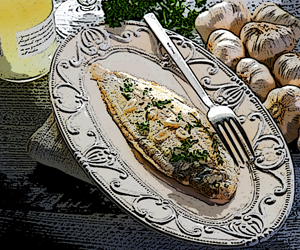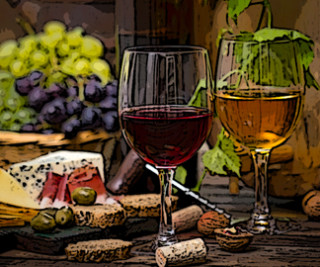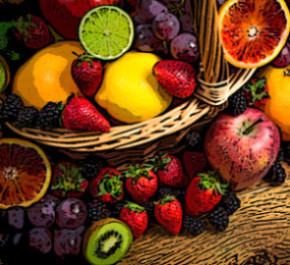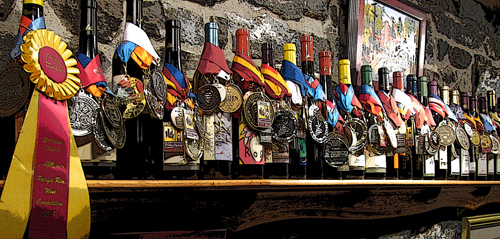“Judgement at Don’s House” Revisited
It’s hard to believe the famous “Judgement at Paris” happened exactly 40 years ago. The blind tasting, pitting California wines against the great wines of France, stunned the world when French judges picked California wines over their own.
It’s even harder to believe it’s been a full year and a half since the “Judgement at Don’s House” sent shockwaves throughout my entire dining room. The blind tasting, pitting a New Jersey wine against California and French counterparts did not make the august pages of TIME Magazine, as George M. Tabor’s account did 40 years earlier, but the event has become a significant part of our celebrated American history. You know, like the duel between Raymond Burr and George Hamilton.
- New Jersey’s Alba Vineyard tasting room is full of awards and medals but what it needs is a little respect.
Wines from New Jersey are the Rodney Dangerfield of the wine world – they don’t get no respect. Winemakers here sometimes feel like the rest of the world hates their wines. How could that be? The rest of the world hasn’t tasted them yet.
Read MoreThe Cancellation Effect In Food And Wine Pairing.
Chapter Nine, Part Five.
 Matching food and wine by weight will put you in the ballpark when choosing the proper wine, but taste is the key to hitting an astronomic-gastronomic home run. Sweet, sour, salt, bitter, umami and piquance interact with one another in predictable ways and once you understand how these principles apply at your dining room table you’ll be able to create some major league food and wine combinations. I lump these interactions into three categories I call the cancellation effect, the cumulative effect, and the neutral effect.
Matching food and wine by weight will put you in the ballpark when choosing the proper wine, but taste is the key to hitting an astronomic-gastronomic home run. Sweet, sour, salt, bitter, umami and piquance interact with one another in predictable ways and once you understand how these principles apply at your dining room table you’ll be able to create some major league food and wine combinations. I lump these interactions into three categories I call the cancellation effect, the cumulative effect, and the neutral effect.
The WineSnark Academy for Sensory Testing, Evaluation & Debauchery (W.A.S.T.E.D.) On Food & Wine Pairing Principles.
Chapter Nine, Parts Two & Three.
 Shortly after WineSnark began its detailed research into taste perception it became apparent that an undertaking of this magnitude required a research team of dedicated, compassionate wine professionals, or as they’re known in the trade, drunks.
Shortly after WineSnark began its detailed research into taste perception it became apparent that an undertaking of this magnitude required a research team of dedicated, compassionate wine professionals, or as they’re known in the trade, drunks.
And so was born the WineSnark Academy for Sensory Testing, Evaluation and Debauchery (W.A.S.T.E.D.). We WASTED professionals do not take our research sitting down, as getting back up is often difficult, and because thousands of grapes have given their lives to further our understanding of human physiology, biochemistry, sensory perception and stuff.
Read MoreIt Was The Best Of Wines. It Was The Worst Of Wines.
Chapter Eleven. Parts One & Two.
The November 1997 issue of the Wine Spectator rated the Louis Latour 1990 Corton-Charlemagne 98 points … and 88 points.
98 LOUIS LATOUR Corton-Charlemagne 1990
Exotic, wild and savage. A deep, “gonzo-crazy” terroir wine, full-bodied and packed with dried herbs, honey and spicy oak. Almost tannic in structure, it explodes like a small volcano on the palate for an unbelievable experience. Not for the faint of heart though.
88 LOUIS LATOUR Corton-Charlemagne 1990
Mature, with an herbal, slightly leathery accent to the pear and oak flavors. Shows its age via dryness and coarseness on the finish.
In the same issue the 1995 Arrowood Réserve Spéciale received 95 points … and 82 points, and the Rochioli 1995 Allen Vineyard Reserve was awarded 96 points … and 85 points. These dyslexic point spreads were not the result of ADD (Alcohol Drinking Disorder); these Dickensian observations were simply a tale of two critics.
Read MoreIn Other Words – Euphemisms In Wine Journalism.
Chapter Six, Part One.
 Once you’ve learned to decipher wine’s elusive qualities you may also need some tips on how to express your observations. In addition to the correlation between the flavors found in wine and the flavors found in your average fruit basket, you’ll want to describe wine’s appearance, texture, weight, oak, and umm … what’s that other one? Oh yeah, arsenic.
Once you’ve learned to decipher wine’s elusive qualities you may also need some tips on how to express your observations. In addition to the correlation between the flavors found in wine and the flavors found in your average fruit basket, you’ll want to describe wine’s appearance, texture, weight, oak, and umm … what’s that other one? Oh yeah, arsenic.
We turn to wine critics for help with these thorny descriptors because they are so much more than mere wine aficionados. That’s right, wine critics are also self-aggrandizing blowhards. No wait! That’s not it! I meant to say they are also writers.
Read More




















